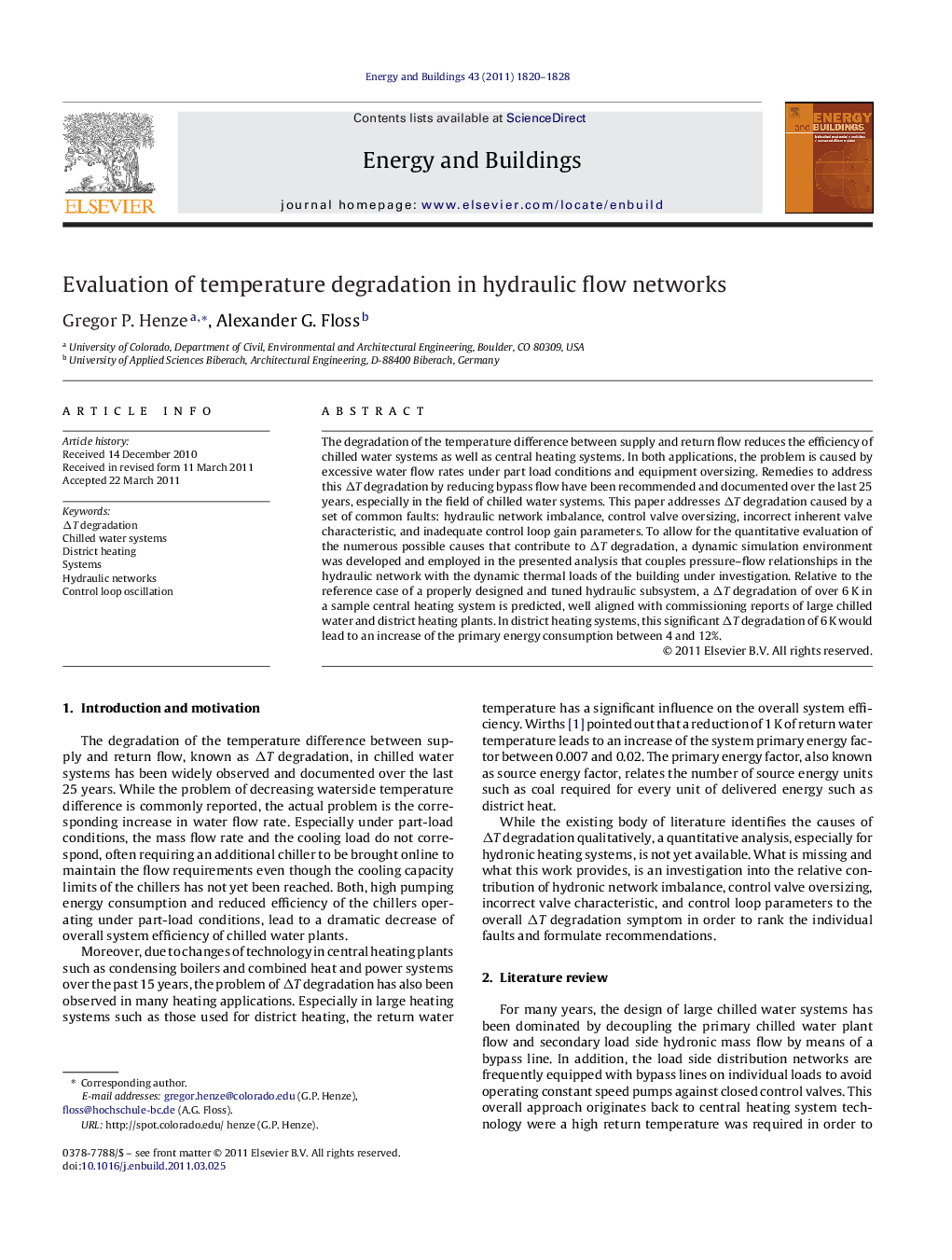| Article ID | Journal | Published Year | Pages | File Type |
|---|---|---|---|---|
| 264350 | Energy and Buildings | 2011 | 9 Pages |
The degradation of the temperature difference between supply and return flow reduces the efficiency of chilled water systems as well as central heating systems. In both applications, the problem is caused by excessive water flow rates under part load conditions and equipment oversizing. Remedies to address this ΔT degradation by reducing bypass flow have been recommended and documented over the last 25 years, especially in the field of chilled water systems. This paper addresses ΔT degradation caused by a set of common faults: hydraulic network imbalance, control valve oversizing, incorrect inherent valve characteristic, and inadequate control loop gain parameters. To allow for the quantitative evaluation of the numerous possible causes that contribute to ΔT degradation, a dynamic simulation environment was developed and employed in the presented analysis that couples pressure–flow relationships in the hydraulic network with the dynamic thermal loads of the building under investigation. Relative to the reference case of a properly designed and tuned hydraulic subsystem, a ΔT degradation of over 6 K in a sample central heating system is predicted, well aligned with commissioning reports of large chilled water and district heating plants. In district heating systems, this significant ΔT degradation of 6 K would lead to an increase of the primary energy consumption between 4 and 12%.
► We address ΔT degradation caused by hydraulic network imbalance, control valve oversizing, incorrect inherent valve characteristic, and inadequate control loop gain parameters. ► We quantitatively evaluate the numerous possible causes of ΔT degradation using a dynamic simulation environment that couples pressure-flow relationships in the hydraulic network with the dynamic thermal loads of the building under investigation. ► In a sample central heating system, we predict a ΔT degradation of over 6 K, well aligned with commissioning reports of large chilled water and district heating plants. In district heating systems, this significant ΔT degradation would lead to an increase of the primary energy consumption between 4 and 12%. ► We recommend developing commissioning tools and approaches to rapidly detect faults in hydraulic networks and unlock significant energy savings and emission reductions with low-cost energy conservation measures.
